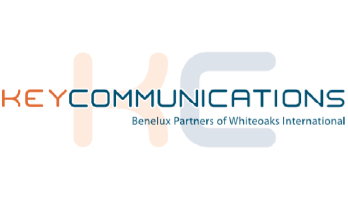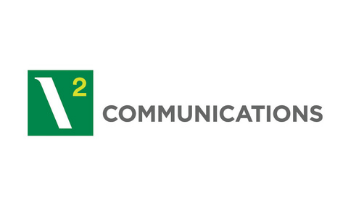Times and attitudes are changing. Communication too!
Research has shown that, both in B2B or B2C, communication plays an important part when it comes to making a purchase decision. Nowadays, if you plan to purchase something, you’ll first go to the internet to look for information about the products or the types of solutions on offer. Based on your research, you’ll probably list potential brands. For a supplier, it is important to provide sufficient relevant information enabling its products or services to get on that shortlist. Further through the decision process, good communication is the way to influence the client. It is meaningful to use various communication strategies and various types of content, all the way through the buyer’s journey. This journey will probably start by looking for general information to get a first impression. After this, in the decision phase, more technical information will be sought but mostly a prospective buyer will want to know how other customers were helped with the products or services on offer.
An organisation needs to make all this information available through various channels and various types of media. The more diverse the channels used, the more chances the provider will have to be noticed and thus end up on the shortlist. In terms of channels, we can think of trade press (press relations), your own website, your own magazine, social media… What it comes down to, is to set up a valid plan and distribute suitable content through the right channels.
What should not be forgotten is that communication and marketing, in general, are a long-term investment. To write a few blogs, send a few tweets and then hope that you’ll be found by everybody, is utopic. A planned approach is needed, in a form close to an industrial process, and a consistent implementation of that plan.
Target groups
A company has to be positioned as inclusive in order for every potential customer to feel that she/he is in the right place and will be addressed in the right way, as nobody likes being excluded.
Quite often, when we speak about ‘inclusive’ we envisage groups that are difficult to reach, from non-dominant cultural backgrounds. It is obvious that the business world is attaching increasing importance to diversity both in external and internal communication. It is also clear that diversity and inclusion is receiving more and more attention but sometimes in more positive ways than others.
The ‘why’ of inclusive communication lies in bringing together all these diverse players where government, enterprises and media sometimes seem to stand on one side and clients and end-users stand on the other side. Today, inclusive communication and marketing are looking for mechanisms and ways to bring these groups closer together and therefore make sure their way forward is consistent, efficient and relevant.
A lot has been said and written about diversity in our society. If you ask someone what he/she thinks about the word ‘diversity’, the first answer will generally be ethnic diversity, because diversity is too often looked upon in a simplistic way. Ethnic diversity has been part of our history for a long time. But inclusive communication is of course not only about ethnicity. Gender diversity will probably come in second place although, in recent years, the attention for gender has increased dramatically.
Today, gender norms and gender identity, but also the consequences this may have for various people in our society are of great importance. In the term LGBTQIA +, ‘transgender’ is used as an umbrella for a series of different meanings. In our societies, it is impossible to know how many people identify themselves as LGBTQIA+. Therefore we speak about a ‘hidden group’. In some countries, they are even more hidden than in others although their voices are still getting louder. And again, in some countries, the law has already been adapted to these increasingly louder voices. You may not have noticed, but since 2014 on Facebook there is a choice between 50 different gender identities. And if you scroll through your Linkedin connections, you’ll see that, between brackets, she/her, he/his was added by cisgender persons… This should shine a different light on the term gender.
At the end of the day, companies should be able to do what they need to: generate a great turnover. Therefore, inclusive communication should seriously be considered as it offers real added value. The more people that a brand, products or services can reach in a relevant way, the better off a company will be. If today, a company doesn’t think about inclusive communication, it will miss an important part of its target audiences and that part is only getting bigger. As the world evolves to become more global, diverse and connected, clients expect their suppliers to evolve with them. For a company, inclusiveness is the tool ‘by excellence’ to prepare for a super diverse future.
Not everyone is an early adopter
A study by Accenture shows that especially millennials tend to prefer brands for which diversity is of paramount importance. In the research ‘What Women Want’ by Kantar Group, it appears that several well-known brands are not really addressing women in the right way. They don’t understand the women’s real priorities and seem to be quite far from this target public. Today, a company or organisation that has something to sell or to say, has to be aware that society has changed and will keep changing. The opportunities are there and inclusive communications is a way to bring them within reach. It is the only way forward for government, enterprises and various other sectors.
Inclusive communication is an approach that attempts to reach as many people as possible and to engage with them – also for internal audiences. The result is positive communication, free from stereotypes. In many countries, there is still a lot of work to be done in that respect. Organisations that decide to develop this expertise and apply it to their own marketing and communication strategy, will do pioneer’s work and end up and being rewarded in terms of market share, especially in those markets where the attention of highly diverse target groups is enormously valuable. Benefits of this approach will also be felt internally, raising visibility for the company among potential recruits, and in relation to other external stakeholders, such as investors. Companies that are implementing inclusive communication are not afraid of change, and to grow one should not be afraid to implement change.
Being 100% inclusive won’t be easy. New debates arise, identity elements that were never considered before can all of a sudden be questioned. A well-oiled organisation has to be able to respond to these challenges and this is just the beginning. Companies don’t necessarily need to hire an in-house specialist, this knowledge can successfully be found externally. With the right consultancy, the sky is the limit!
By Catherine d’Adesky, Key Communications


